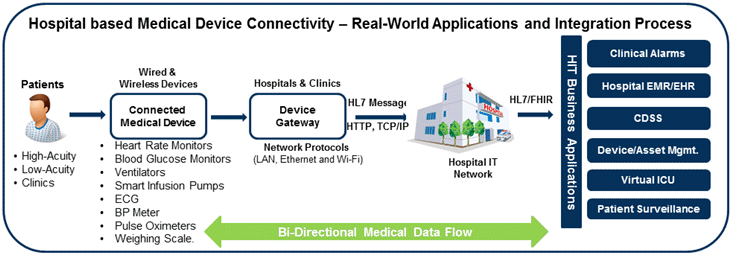Medical Device Interoperability is Picking up Pace Globally

For the last few years, healthcare providers globally had been focusing on implementing Electronic Medical/Health Record (EMR/EHR) systems and fine-tuning workflow and functionalities to best suit end-user needs. In many countries, the implementation of EHR is complete and quite successful. It is widely accepted that there can be many potential improvements in the care delivery process and patient safety through the effective use of an EMR/EHR. It is not the time for the industry to be complacent.
Hospitals are tasked with the need to do more with less, while also keeping pace with technology and patient expectations. In many hospitals, nurses and clinical staffs spend half of their working hours per shift on documentation activities, whereas they are supposed to spend this valuable time in direct patient care. What is the advantage of having expensive EHRs when nurses and clinical staffs have to note patient vitals and key parameters in paper pads and manually key-in those into patients’ medical records? Improved care coordination also requires accurate, complete, and automated data capture.
Medical device connectivity and interoperability is quickly becoming a top priority at hospitals and in healthcare settings because of the numerous benefits it offers across the care continuum. A well-established device connectivity strategy can help hospitals implement clinical alarms based on early warning scores, automated electronic charting, emergency alert and response systems, virtual intensive care units (ICUs), continuous patient surveillance and remote patient monitoring, medical device asset management, and real-time location solutions.
Frost and Sullivan’s new research report on Global Hospital-based Medical Device Connectivity Market, Forecast to 2022 provides a comprehensive analysis on the global medical device interoperability market with a competitive landscape covering clinical information technology (IT) systems vendors, medical device original equipment manufacturers (OEMs), vendor-agnostic third-party medical device data systems (MDDS) vendors, and healthcare system integrators. Please reach out to us to know more about medical device interoperability solutions and numerous methods to establish connectivity of your medical devices with the hospital network regardless of device types.



